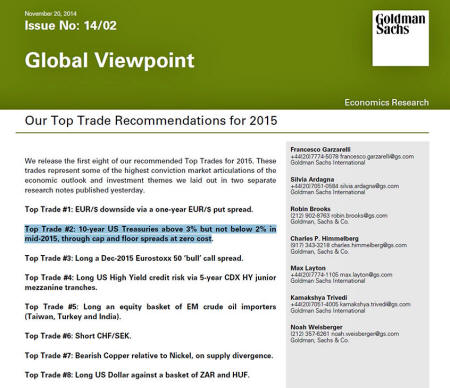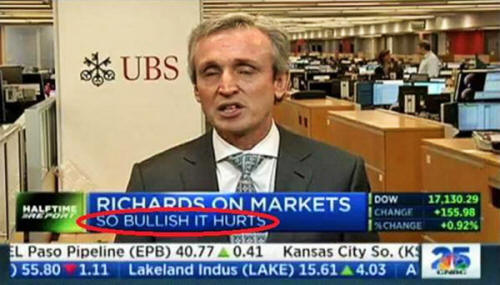|
by Tyler Durden
from
ZeroHedge Website
if only in China...
for now...
We warned on Friday, after last week's China rout, that the market is getting ahead of itself with its expectation of a RRR-cut by China as large as 100 bps.
We were spot on, because not only was there no RRR cut, but Chinese stocks plunged, with the composite tumbling as much a 9% at one point, the most since 1996 when it dropped 9.4% in a single session.
The session, as profile overnight was brutal, with about 2000 stocks trading by the -10% limit down, and other markets not doing any better: CSI 300 -8.8%, ChiNext -8.1%, Shenzhen Composite -7.7%.
This was the biggest Chinese rout since 2007.
The worst news is that the 3,500 level in the SHCOMP which until recently had been seen as a "hard barrier" for the PBOC, has now been breached, and not only is the Shanghai Composite red for the year after being up 60% a little over 2 months earlier (don't worry though: just like on Yahoo Finance Twitter everyone took profits at the highs), but nobody knows why the Politburo let stocks tumble and worst of all, how much further will it allow stocks to drop.
Elsewhere in Asia, equity markets traded with significant losses on what is being referred to as 'black Monday' amid increased growth concerns coupled with commodities falling to fresh 6 year lows and US stocks in correction, sparked a further sell-off in the region.
The ASX 200 (-4.1%) declined by the most in 4 years, Nikkei 225 (-4.6%) and Hang Seng (-5.2%) also saw considerable losses with energy dragging the index lower. 10yr JGBs saw relatively muted trade and are up by 3 ticks.
Risk averse sentiment has dominated the price action in both Asia and Europe as the week kicks off, with Chinese equities again under heavy selling pressure as market participants were left disappointed by the lack of action by the PBOC to ease monetary conditions further.
As a result, equity indices in Europe opened sharply lower (Euro Stoxx: -2.3%) and in spite of coming off the worst levels of the session, remain broadly lower, with materials and energy sectors underperforming amid the continued slump in commodity prices.
The Dax was well below 10,000 at last check.
In FX markets today, JPY benefited from risk averse and interest rate differential flows as market participants scale back Fed rate hike expectations, which in turn saw the pair fall below the 200DMA line and hit its lowest levels since mid-July.
The short-sterling curve has been seen flatter in trade so far in European amid the ongoing risk averse sentiment, which as pointed out by David Smith of The Times is set to put interest rate rise on hold by both the Fed and the BoE.
Consequently, EUR outperformed GBP, which in turn saw EUR/USD hit 1.1500 level for the first time since February 2015, while EUR/GBP gradually edged towards the 200DMA line as USD continued its recent trend lower (USD-Index: -0.7%).
Fixed income products reside in positive territory, bolstered by the global risk off sentiment as T-Notes head into the North American open in positive territory, albeit off their best levels. Elsewhere, Eurozone 5y5y inflation forward rate fell to its lowest level in 6 months.
In the US, the 10-year Treasury yields traded below 2 percent for the first time since April, precisely what Goldman said in its Top Trade #2 for 2015 would not happen.
The rout in energy and base metals markets continued today, seeing WTI fall to its lowest level since February 2009 and Brent crude to its lowest level since March 2009 below the USD 40/bbl and USD 45/bbl respectively as Iran continues their recent rhetoric regarding an increase in supply.
Elsewhere in base metals, iron ore and steel hit limit down overnight and traded around 9 year lows, with nickel reaching its lowest level for 6 years. Gold has also seen soft price action today, reversing some of last week's gains.
Some more key commodity headlines courtesy of RanSquawk
Going forward, market participants will get to digest the release of the latest Chicago Fed Nat Activity Index, as well as look out for comments by Fed's Lockhart.
Be very careful for unexpected comments by Bullard because it was just around a -10% correction that the St. Louis Fed president hinted at QE4 last October.
Biggest selected cross-asset moves via Bloomberg
Markets
Equities
Bulletin Headline Summary from Bloomberg and RanSquawk
US Event Calendar
DB's Jim Reid Completes the overnight recap
This morning's rout in Asia comes after hopes that more government support in China could be around the corner, although the lack of any state intervention first thing this morning is seemingly exaggerating the pain in markets.
As per the WSJ, the PBoC is set to make another move to cut the RRR, possibly as soon as this week in a bid to flood the Chinese banking system with as much as $106bn in liquidity.
Meanwhile, a second story doing the rounds is a report that China's State Council has published a plan allowing for pension funds managed by local governments to invest in the stock markets for the first time.
According to Reuters, the report suggests that pension funds will be allowed to invest up to 30% of their net assets in stocks, funds and balanced funds having only previously been able to invest in bank deposits and treasuries.
Elsewhere, echoing similar moves by the Chinese regulators, yesterday Taiwan's Financial Supervisory Commission made the move to ban traders from short-selling borrowed stocks and depository receipts at lower prices than the previous day's close in a bid to stabilize the Taiwanese stock market.
There's also news out of South Korea where the Financial Services Commission Chairman has urged authorities to make timely actions when deemed necessary in markets and act 'pre-emptively' after the nation's largest ETF saw its biggest weekly withdrawal since inception in 2000 last week.
These reports have clearly done little to help sentiment this morning however and it's looking like the rout is set to extend into DM markets with S&P 500 futures down some 2.5% already.
Back to markets on Friday. With the S&P 500 tumbling to its lowest level now since October last year, the Dow (-3.12%) saw a similar sharp decline on Friday and as a result officially entered correction territory with a now 10% retreat from the May highs. It was a similar story in Europe also.
The Stoxx 600 tumbled 3.26%, while the DAX (-2.95%) and CAC (-3.19%) also moved a steep leg lower.
Peripheral bourses were not immune to the moves either, with a 2.98% fall for the IBEX in particular taking it into negative territory (-0.08%) for the year. That's after the index was up as much as 15% just four months into the year. Credit also had a poor day.
In the US CDX IG finished nearly 2bps wider while in Europe we saw Crossover and Main leak 15bps and 3bps wider respectively. All-told that saw the VIX jump 46.5% to 28 on Friday and in turn marking the highest level since December 2011.
Amazingly, last week's 119% surge in the index (albeit from a low base) was the largest in the history with data going back to 1990.
Oil markets once again generated plenty of headlines on Friday as WTI finished down 2.11% on the day at $40.45/bbl and has in fact tumbled another 2% in trading this morning taking it below $40 in the process. Brent (-2.49%) also weakened on Friday while the complex wasn't helped by the latest Baker Hughes oil rig count which showed an increase in the number of operating rigs last week.
Combined with the sell-off on Friday, we've seen a fresh wave of selling across equity markets in the Middle-East this weekend and a number of fresh cycle lows reached, particularly in the more Oil-sensitive countries.
The Saudi-Arabian equity market tumbled into a bear-market yesterday after plummeting nearly 7%, Dubai saw its biggest one-day loss this year, Egypt fell the most in three years and Israel saw its biggest slide in nearly four years. Saudi Arabia in particular - seen as something of a bellwether for the Gulf - has now tumbled 24% from its April peak and in turn entered its second bear market in less than a year.
Much of the rest of the commodity complex also suffered on Friday with the likes of Aluminum (-1.71%), Copper (-1.25%) and Silver (-1.61%) all sliding.
Gold (+0.74%) continues to be one of the few beneficiaries from the selloff in risk while Treasuries also benefited from a decent bid on Friday with the 10y (-3.1bps) yield down for the third consecutive day to 2.037%.
Fed Funds contracts continue to slide too with the Dec15 contract down another 1.5bps to 0.275% having been as high as 0.340% earlier in the month.
There was a similar move lower for Bunds too with the 10y down another 1.9bps to 0.562% while the peripherals ended 2-4bps higher. Dataflow largely played second fiddle to the sharp moves on Friday. In the US the flash August manufacturing PMI declined 0.9pts from July to 52.9 after expectations for no change.
There was better news in Europe however where we saw the Euro area flash composite PMI rise 0.2pts to 54.1 (vs. 53.9 expected), led higher by the services reading in particular (0.3pts to 54.3; 54.0 expected) while the manufacturing print stayed unchanged at 52.4 (vs. 52.2 expected).
Regionally, Germany led the gains with the composite rising 0.3pts to 54.0 (vs. 53.6 expected) after a surge higher in the manufacturing print (+1.4pts to 53.2; 51.6 expected) which was more than enough to offset a slightly weaker services print (-0.2pts to 53.6; 53.7 expected).
Meanwhile in France we saw the composite drop slightly to 51.3, from 51.5 last month.
Before we turn over to the week ahead, the St Louis Fed President James B. Bullard reiterated his stance on Friday that the outlook for US growth remains relatively good and that the expansion in the second half is likely to be 'above trend'.
Bullard also noted 'there has been a lot of cumulative progress in labour markets and I think you can look through the decline in oil' before saying that he is more sanguine about the outlook for global growth relative to markets. Bullard is a non-voter this year but as we noted earlier, with markets seemingly in freefall mode at the moment there will be plenty of attention on the Fedpseak this week for us to gauge how the Fed is viewing the recent volatility.
Turning over to this week's calendar now.
It's a very quiet start to the week today with no data due out this morning in Europe and just the Chicago Fed's national activity index this afternoon. Tomorrow is set to be busier though and in particular there will be much focus on the final reading for Q2 GDP in Germany along with the IFO survey and trade data.
In the US we get more housing data with the S&P/Case Shiller house price index, July new home sales and FHFA house price index. The flash composite and services PMI's are also due along with the consumer confidence reading and Richmond Fed manufacturing activity index.
We start in Asia on Wednesday where we get Japan PPI and China consumer sentiment data.
There's nothing of note in Europe on Wednesday while in the US there'll be much focus on the durable and capital goods orders data for July.
In Europe on Thursday we'll get UK house price data along with various confidence indicators out of France. The afternoon session is particularly data heavy in the US with the second reading of Q2 GDP and Core PCE likely to be front and centre, while pending home sales and the Kansas City Fed manufacturing activity index are also due.
Closing out the Asia session on Friday will be Japan CPI and retail sales, along with China industrial profits and conference board leading indicators. It'll be a particularly busy end to the week in Europe too where we get French PPI, German CPI, UK Q2 GDP and Euro area confidence indicators.
It's also a busy end in the US where we get the PCE core and deflator readings for July, personal spending and income prints and finally the University of Michigan consumer sentiment print for August.
***
To summarize:
|




